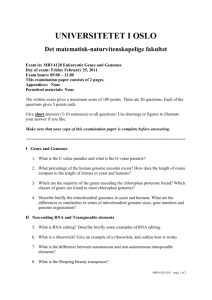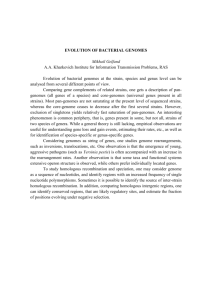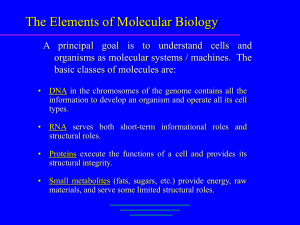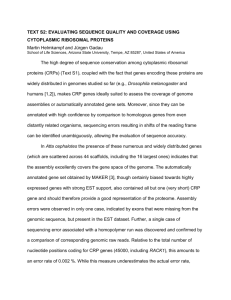UNIVERSITETET I OSLO Det matematisk
advertisement
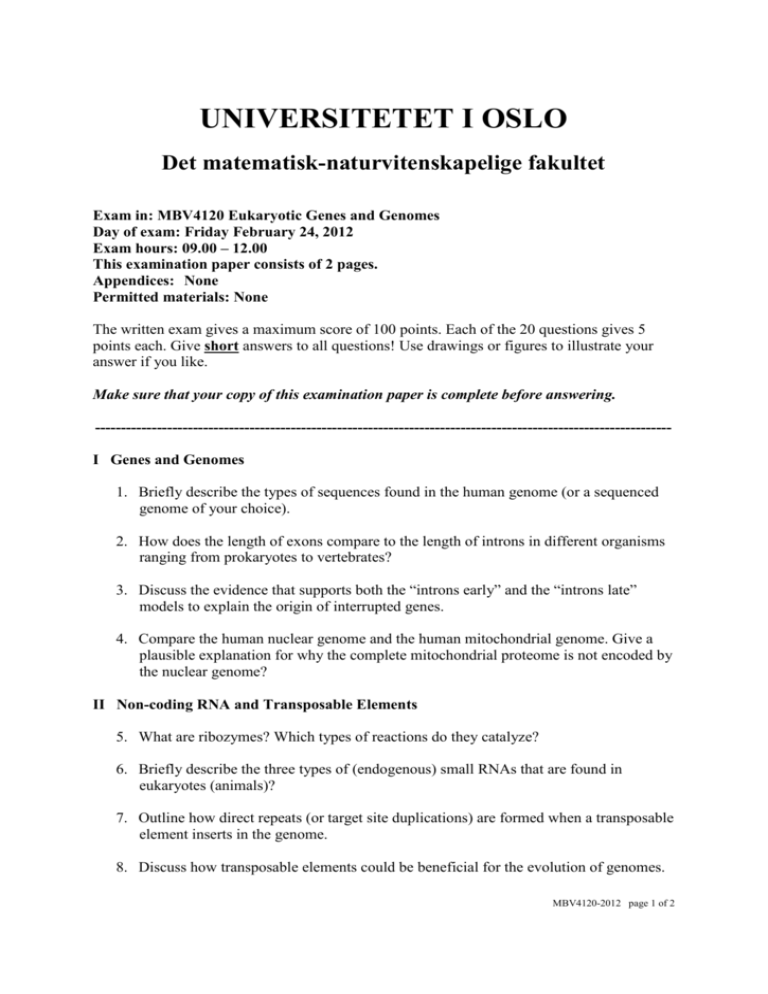
UNIVERSITETET I OSLO Det matematisk-naturvitenskapelige fakultet Exam in: MBV4120 Eukaryotic Genes and Genomes Day of exam: Friday February 24, 2012 Exam hours: 09.00 – 12.00 This examination paper consists of 2 pages. Appendices: None Permitted materials: None The written exam gives a maximum score of 100 points. Each of the 20 questions gives 5 points each. Give short answers to all questions! Use drawings or figures to illustrate your answer if you like. Make sure that your copy of this examination paper is complete before answering. ---------------------------------------------------------------------------------------------------------------I Genes and Genomes 1. Briefly describe the types of sequences found in the human genome (or a sequenced genome of your choice). 2. How does the length of exons compare to the length of introns in different organisms ranging from prokaryotes to vertebrates? 3. Discuss the evidence that supports both the “introns early” and the “introns late” models to explain the origin of interrupted genes. 4. Compare the human nuclear genome and the human mitochondrial genome. Give a plausible explanation for why the complete mitochondrial proteome is not encoded by the nuclear genome? II Non-coding RNA and Transposable Elements 5. What are ribozymes? Which types of reactions do they catalyze? 6. Briefly describe the three types of (endogenous) small RNAs that are found in eukaryotes (animals)? 7. Outline how direct repeats (or target site duplications) are formed when a transposable element inserts in the genome. 8. Discuss how transposable elements could be beneficial for the evolution of genomes. MBV4120-2012 page 1 of 2 III Genetic Methodology and Model Organisms 9. Transposition of HML or HMR to the MAT - locus is explained by a synthesisdependent strand-annealing model (SDSA). Explain how transposition occurs. How is this mechanism different to homologus recombination? 10. Briefly describe three reverse genetics technologies (or methods) that allow for direct targeting of a gene on the DNA level. 11. Chromosome mutations that produce paracentric inversions lead to chromosome breakage. Why? 12. Assume a scenario where three paralogous genes in Arabidopsis are redundant in terms of gene function. Describe different approaches by which you could generate a mutant phenotype. IV Developmental Biology 13. How does DNA hypermethylation of the SUPERMAN locus affect floral organ development? Explain using the ABC model. What happens if additionally the HMTase KRYPTONITE is mutated? 14. How is flowering time in Arabidopsis controlled? Which genes and mechanisms are important for the transition to flowering? 15. How is the anterior pole formed in the Drosophila egg? What is the difference between a maternal and a zygotic factor? 16. How are the homeotic genes organized in Drosophila and what is their role during development? How are the homeotic genes in Drosophila regulated? V Chromosomes and Epigenetics 17. Briefly describe the function and synthesis of telomeres. 18. Describe the properties of heterochromatin and euchromatin. 19. What is genomic imprinting? 20. Which type of reactions are catalyzed by the Tet (Tet1, Tet2, Tet3) enzymes? How may these enzymes be important for active DNA demethylation? MBV4120-2012 page 2 of 2
